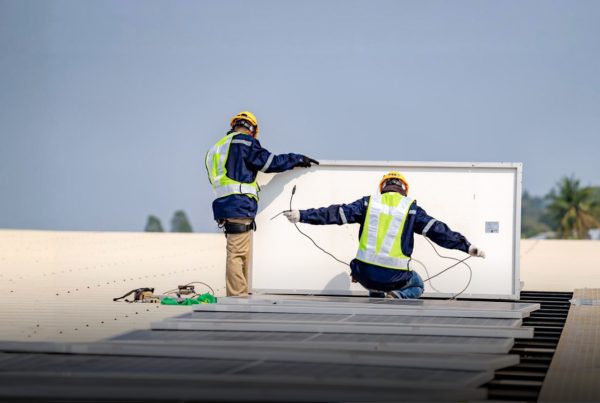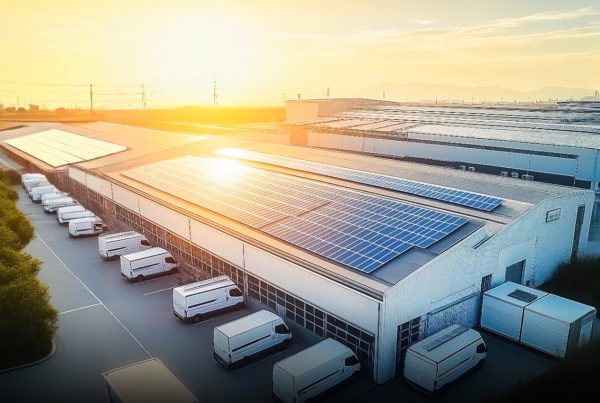Solar power has emerged as a viable and responsible choice for powering our homes and businesses in a world that’s becoming increasingly conscious of environmental issues and energy sustainability. In India, the government has recognized the potential of solar energy and has introduced various incentives and subsidies to encourage the adoption of solar rooftops.
In this write-up, we’ll explore the benefits of solar energy, the advantages of adopting solar rooftops for Indian consumers, and the extensive range of government incentives and subsidies available.
Benefits of Solar Energy for India
Solar energy has gained prominence due to its numerous advantages for India, spanning environmental, economic, and social aspects. As you know, solar energy is clean and renewable, making it an eco-friendly choice. By reducing the reliance on fossil fuels, it aids in mitigating the adverse effects of climate change. With its abundant sunlight, India has an exceptional opportunity to harness solar power and significantly reduce its carbon footprint.
On the economic front, solar energy reduces electricity bills and provides a stable and predictable energy source in the long term. India’s dependence on imported fossil fuels can be diminished, leading to energy security. Furthermore, the solar energy sector has the potential to generate substantial employment opportunities, thereby contributing to the country’s economic growth.
Advantages of Adopting Solar Rooftops
For Indian consumers, adopting solar, particularly rooftops comes with numerous advantages.
– Firstly, it offers a chance to generate clean, renewable energy at home, reducing electricity bills and providing energy independence.
– Solar rooftop systems also have minimal maintenance costs, making them a cost-effective and hassle-free solution.
– Surplus energy can be fed back into the grid, allowing consumers to earn through net metering. It offsets electricity costs and makes solar rooftops a financially rewarding investment.
– Additionally, solar rooftops increase property value, making them a smart choice for homeowners and businesses.
Government Incentives and Subsidies
India offers a subsidy program to boost residential solar energy adoption that significantly reduces the financial burden of installing solar panels. This program allows residential consumers to save up to 40%[1] [2] of their installation costs. The key to taking advantage of this incentive lies in understanding the Central Financial Assistance (CFA) provided by the Ministry of New and Renewable Energy (MNRE).
Under the Rooftop Solar Programme Phase II, announced at the end of 2022, MNRE offers CFA to residential consumers for rooftop solar system (RTS) installations. What makes CFA even more appealing is its direct benefit transfer (DBT) mechanism, ensuring that consumers receive the incentive directly in their bank accounts.
https://www.mercomindia.com/residential-rooftop-solar-above-10-kw-subsidy-%E2%82%B994822
Few other key incentives include:
1. Net Metering: State-specific regulations enable net metering, allowing consumers to sell excess energy to the grid and earn credits.
2. Accelerated Depreciation: Businesses can avail accelerated depreciation benefits, which reduce their tax liabilities, thus making solar rooftop investments more financially appealing.
3. Capital Subsidy for Institutions: Educational institutions, public sector buildings and healthcare facilities can access capital subsidies for solar rooftop installations.
4. GST Benefits: The Goods and Services Tax (GST) on solar equipment is minimal, reducing the overall cost of installation.
How to Avail Government Incentives?
Consumers can contact authorized solar panel manufacturers in India to avail of these incentives. These manufacturers often have tie-ups with government agencies and can guide consumers through applying for subsidies and incentives. Consumers should also be aware of the state-specific regulations and incentives, as they may vary from region to region.
Cost Breakdown and Return on Investment
The costs associated with solar rooftop installations include the initial purchase of solar panels, inverters and installation charges. However, with government incentives and subsidies, these costs are significantly reduced. Additionally, the return on investment (ROI) for solar rooftops is impressive, with most systems paying for themselves in a few years. The savings on electricity bills and potential income from net metering make solar rooftops a financially sound decision.
Government incentives further sweeten the deal, enhancing the ROI and reducing the payback period. With various benefits and subsidies, consumers can expect to recoup their investment sooner and enjoy years of virtually free electricity.
Apply for Central Financial Assistance (CFA) Online
Central Financial Support (CFS) or Subsidy from the Central Government for residential rooftop solar installations is the subsidy that applies to solar plants with a capacity of up to 3 kW.
The Central Financial Assistance (CFA) program aims to promote residential solar installations and achieve a cumulative capacity of 40,000 MW from Grid Connected Rooftop Solar projects by 31.03.2026, with incentives for consumers and DISCOMs.
To directly apply for the Grid Connected Solar Rooftop Programme and access Central Financial Assistance (CFA), follow these steps:
1. Visit the National Portal for Rooftop Solar: If you are a residential electricity consumer looking to install Grid Connected Rooftop Solar (GCRTS), you can choose either of the two application mechanisms. The first method involves applying through the National Portal for Rooftop Solar.
2. Application Submission: On the National Portal, submit your application for the rooftop solar project.
3. Empanelled Vendor Installation: Once your application is approved, empanelled vendors will install the solar system on your rooftop.
4. State DISCOM Verification: After successful installation, your State DISCOM will verify the setup to ensure it complies with program requirements.
5. CFA Transfer: The applicable CFA or subsidy will be directly transferred to your account if your installation is verified.
Alternatively, you can opt for Mechanism 2 by applying through your State DISCOM’s portal. The CFA will be deducted from your payment to the empanelled vendor after the State DISCOM verifies the installation.
For any technical or support-related queries, contact the provided email addresses or visit the DISCOM Portal links for further assistance.
Click here for further details. ( https://mnre.gov.in/grid-connected-solar-rooftop-programme/#:~:text=To%20avail%20CFA%20a%20residential,link(19%20KB%2C%20PDF))
Jakson Group – Get the best solar panels in India
When selecting a solar installer, choose Jakson, one of India’s top 10 solar panel manufacturers. They are catering domestic energy demands and planning to export solar modules to the international markets through their near-term goal of achieving solar manufacturing capacity of 3 GW by FY26.
Jakson’s solar products range from solar panels to mounting structures, power packs and more, catering to both B2B and B2C markets through dedicated channel partners and dealers in India and abroad. Their On-Grid systems are suitable for residential, commercial and MSME customers seeking solar rooftop solutions ranging from 3 KW to 60 KW.
The Road to Conclusion
In India, the government’s commitment to promoting solar rooftops is evident through the various incentives and subsidies offered. Solar energy provides environmental benefits, economic advantages and social empowerment, making it a win-win for the nation.
By leveraging these incentives and subsidies, Indian consumers can make a wise investment that benefits their pockets and contributes to a greener and more sustainable future. It’s time for India to embrace the sun and power its way to a brighter tomorrow.









